Tact RCS 2.0 AA Room Correction System
| Tact RCS 2.0 AA Room Correction System |
| Ralph Glasgal |
| 3 November 1999 |
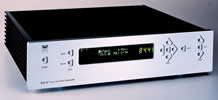 Specifications
Specifications
Tact RCS 2.0 DD Room Correction System, $2950.
Analog to Digital Converter Card $690,
Digital to Analog Converter Card $590.
Tact Audio, 201 Gates Road, Little Ferry, NJ 07643
Phone 201/440-9300, fax 201/440-5580
E-mail info@tactaudio.com
One Hell of a Computing Animal
TACT’s 3rd box presages a new era in high-end sound reproduction
“Used as just a manual preamp, it has the most intricate and precise tone control system ever included in a home device. The RCS 2.0 AA is the ultimate parametric equalizer, able to control amplitude at any audible frequency with a frequency resolution of two Hz in the bass and comparable resolution in the treble with CD like dynamic range.”
Two multiway speakers with associated subwoofers are to be installed. Each needs adjustments for position, signal level, crossover frequencies, and subwoofer phase. There are twelve speaker adjustments in all. These four speakers also have to be situated and angled with respect to the listening position so as to minimize standing waves, the noxious early reflections of an untreated listening room and other loudspeaker directional or delay anomalies.
Most audiophiles know that doing all these things by ear is a lifetime job that never ends especially since the process starts from scratch each time a speaker is replaced, moved, added for surround or a new room is used or the old one is redecorated. TACT Audio, Inc., a New Jersey company, founded by Dr. Radomir Bozovic, with financial support from AudioNord International, a Danish Company, has not only solved this speaker installation problem but cured quite a few other audiophile headaches too.
RCS 2.0 AA, A Digital Signal Processing Preamp
The RCS 2.0 AA is, in essence, an intelligent analog and digital line level preamplifier that temporarily takes advantage of a PC to automate or setup some very advanced audio processing functions. Looked at as just a straightforward standalone stereo preamp, the fully equipped 2.0 AA has four analog inputs (3 RCA, 1 XLR ) and five digital inputs; one optical Toslink, three coax SPDIF, and one AES/EBU; digital level control with .1 dB resolution, a digital balance control, mute, two stereo analog outputs (one RCA and one XLR) and three PCM digital outputs (Toslink, AES/EBU, and RCA). This preamp is also a 96/48/44.1-24/16 ADC as well as a 96/48/44.1-24/16 DAC. If you wanted to, you could use this unit to format 96/24 DVDs from analog sources. All these basic preamp functions, and then some, can be controlled from the box or the remote control. Each output may be polarity reversed but since a complete polarity reversal takes four button pushes it is not fast enough to do definitive testing as to the audibility of absolute polarity. Each output may be delayed relative to the other in hundredths of a millisecond up to 99.99 milliseconds which is useful if you cannot get your speakers equidistant from the listening position.
Used as just a manual preamp, it has the most intricate and precise tone control system ever included in a home device. The RCS 2.0 AA is the ultimate parametric equalizer, able to control amplitude at any audible frequency with a frequency resolution of two Hz in the bass and comparable resolution in the treble with CD like dynamic range. The control of such a precise equalizer is best automated as discussed below. But the tone control filters can be used manually by using the PC program provided to draw the response curve desired and then down loading it into the preamp. 9 pairs of frequency response curves could be stored in the unit and switched rapidly from the listening position.
The RCS 2.0 assumes that your subwoofers are driven from the same outputs as the main speakers and have their own crossover networks. Since my Sunfire subwoofers have built-in amplifiers, networks and controls, I just used the extensive bass measuring capability provided to assure myself that Bob Carver had done his homework. Of course, this unit can also be used with speakers whose woofer coils are individually accessible in biamp applications.
The Advanced Automated Functions of the TACT RCS 2.0 AA
“It can launch up to 1000 pulses per speaker and average the results. The advantage of this is that the effects of ambient noise are minimized. If your room is quiet, then one click pair per speaker is all that is needed.”
The most exciting feature of the RCS 2.0 is its ability to measure both speaker response and the effects of the room on this response and then do something about them. For this purpose TACT includes a microphone, and a long cable which connects to the back of the preamp. One puts the microphone at the favored listening position and then you have up to 99 seconds to get out of the room and let the TACT system measure your combined speaker and room response. It does this by sending very brief pairs of clicks (one wide and one narrow for bass and treble measurement) to each speaker and measuring the response to these impulses at the listening position. It can launch up to 1000 pulses per speaker and average the results. The advantage of this is that the effects of ambient noise are minimized. If your room is quiet, then one click pair per speaker is all that is needed. If one is really fanatical, one can move the microphone to as many as 9 different locations and the TACT will calculate this dispersed average response. The major advantage of moving the microphone around is that the subsequent correction applied to the system will not be so one listener centric. On the other hand, it will not be as good as it could be, anywhere, particularly in the balance and delay departments. The microphone calibration curve is already included on the CD-ROM that comes with the unit so actually each CD-ROM is custom made for your particular box including serial number interlock.
Figures 1, 2, 3, and 4 show the PC screen used to set the microphone arrangement and view the measurement results. For clarity only the results for the left speaker, a very large Soundlab electrostatic panel, are shown. They show the long (Fig. 1) and short (Fig.2) impulses received by the microphone in my room and the corresponding bass (Fig. 3) and treble (Fig. 4) response curves. You should ignore the response below 200 Hz in the high frequency curve and the response above 200 Hz in the bass curve. One can see that, since my room is treated, the amplitudes of the subsequent room reflections after the complex looking pulses are way down in the mud. Comparing the baseline before and after the 6 ms wide bass pulse one can see that low level reflections continue for only about 30 milliseconds. But there is a small early reflection about 26 ms after the bass impulse. Since 26 ms represents about 24 feet of added reflected path length, this interference is probably coming from the walls rather than from nearby furniture. Since its polarity is the same as the impulse, it is not from the dipole backwave. Its effect is inaudible in my system where I deliberately generate hundreds of much louder early reflections for surround speakers so I don’t anticipate doing anything about this in the near future. However, it is sure nice to know that the room is not influencing my reviews for The Stereo Times.
“Once the peccadilloes of the speaker and room are known, via the impulse response, the RCS 2.0 calculates the settings of its fine grained equalizer needed to eliminate them. To do this properly, one needs to first tell the TACT software what it is you wish to achieve.”
Once the peccadilloes of the speaker and room are known, via the impulse response, the RCS 2.0 calculates the settings of its fine grained equalizer needed to eliminate them. To do this properly, one needs to first tell the TACT software what it is you wish to achieve.
The TACT software does a Fourier Transform of the stored impulse data to produce the frequency response curves of figures 3 and 4. Figure three shows the low frequency part of this display from 20 to 2000 Hz. The shows that the left Soundlab/Sunfire combination has a dip of 5 dB at 600 Hz and a peak of 10 dB at 50 Hz. Figure four shows that the speaker has a relatively narrow 8 dB peak at 2,300 Hz but is otherwise quite well tamed as are most electrostatics. The right speaker was remarkably similar.
Once the peccadilloes of the speaker and room are known, via the impulse response, the RCS 2.0 calculates the settings of its fine grained equalizer needed to eliminate them. To do this properly, one needs to first tell the TACT software what it is you wish to achieve. In my case I wanted just flat response down to 20 Hz. But provision is made to select and shape to taste what TACT calls target response curves. One can select a curve from the TACT library and then change or add corners (3 dB points) to make the response go up or down 6 dB per octave or more depending on the number of corners used. Within reason, you can draw any response curve you wish and the software will produce just the right filter to achieve this response, taking into account both the speaker and room response.
For some arcane reason TACT does not believe that audiophiles should have a flat response within their listening rooms. Therefore the overwhelming number of stored target curves provided have slopes mostly downward with frequency. To find the one curve that is simply flat down to 20 Hz one must know that it is called “Nearfield Response”. Now you know. There is no printed manual with the 2.0 but one can print out a well written, voluminous manual using the PC printer and contained therein is the rationale for not using flat response in small listening rooms.
Audiophiles and the PC
“If you are PC phobic, the TACT system is not for you.”
While the computer may be anathema to many audiophiles, it is clear that the PC will soon be able to do even more for high-end sound reproduction than it has been able to do so far for high-resolution photography. If you are PC phobic, the TACT system is not for you. While any ten year old Gates-blooded American can probably get the TACT software installed and an RS-232 communication link to the TACT preamp going, this may not be a trivial task for anyone of the WBC (Way Before Computers) era. My own PC was in another distant room and immovable so I needed to run a very long cable to do this review. Of course, a laptop with Pentium processing power and a CD-ROM player built-in would make the job easier. The cost of the PC, if you don’t already have one, is a consideration here. Fortunately, once you have made the measurements, downloaded the correction filters, delay, balance, etc. the PC and the microphone can be disconnected.
Room Correction Considerations
The TACT methodology of measuring the impulse response (rather than the frequency response) has a tremendous advantage over conventional steady-state-tone measuring methods. Say one measured the loudspeaker/room response using a sinewave oscillator and a microphone attached to a meter. Then, using the resultant curve to set a conventional equalizer feeding the speaker, one would assume that a flat response would be achieved.
Wrong! Music, in particular, consists mainly of transients. Thus if a standing wave in the room, causes say a loss of 10 dB at 100 Hz at the listening position and we apply a 10 dB boost at the speaker, then a brief but audible10 dB peak will be heard until the room response catches up to cancel the peak. It is not the frequency response of the speaker/room system that needs to be corrected but the transient response. Since the TACT RSC 2.0 measures the response based on a train of averaged discrete impulses it does equalize properly for both speaker and room anomalies up to a certain point. While improvements in this technology will come at an increasing rate, the RSC 2.0 can only cancel early reflection that occur within a period of one wavelength of the frequency involved. Thus, a reflection off the rear wall from ten feet behind the listener will be delayed about 20 ms. This delay corresponds to the period of a frequency of about 50 Hz. Thus the TACT will not be able to deal with the components in this reflection at frequencies above this. On the other hand, corrections get to be quite accurate for near reflections coming from the floor, ceiling or nearby furniture. The TACT RS 2.0, as good as it is, is not a complete substitute for room treatment but it is difficult for the usual room treatments to eliminate low bass problems and thus it is providential that this is where the 2.0 works the best.
My Results
Let me state at the outset that my results are in no way typical. My listening room and test facility is very well treated with absorption panels to eliminate early reflections and room modes. So I did not anticipate any major sonic revelations. I was wrong in this expectation.
First the 2.0 confirmed that my speakers were precisely equidistant from the best listening position. It also had a few things to say about the balance between the channels so I adjusted the bias control on the electrostatic speakers to make their efficiencies identical. At this point I discovered that the TACT 2.0 includes a pink noise generator that can be switched from one channel to the other and this made it even easier to get the channel balance correct. It is not a good idea to let the 2.0 unit do this automatically without checking by ear. The 2.0 will get the energy coming from both speakers to be identical but it is always possible that an uncorrected narrow peak in one channel at say a frequency such as 9 kHz will force an unwarranted balance adjustment throughout the rest of the range.
This points up the issue that as a measuring device, the RSC 2.0 is superb but many of its remedial functions are only required if you eschew room treatment or don’t adjust speaker position, polarity, phase, and response controls properly.
Next came the original problem of matching the Sunfire subwoofers to the full-range electrostatic panels. With six controls to adjust for each speaker I would have needed until the 3rd millenium to get it right by ear. Even with the TACT response displays it took me 17 measurement cycles to finally get them matched to each other and as flat as possible before final TACT correction. For the first time since installing the two Sunfires, I felt I was hearing full, vibrant, natural bass even without the final room correction. Since electrostatic speakers have few resonances and little group delay, I did not anticipate needing any serious treble speaker equalization and this turned out to be the case. The 2.0 actually uses one high pass and one low pass network to fabricate its correction filters and if you are curious you can view both these correction filter curves on your PC screen. Since they are simply the speaker response curves subtracted from the target curves they are not very interesting to look at.
One disadvantage of the present TACT configuration is that you cannot measure the response with the correction filters in place. Thus there is no way to get before and after displays on the PC unless you have two TACT boxes or some other response measuring system. You can look at both the correction filter and the loudspeaker/room frequency response curves and observe that they are exact mirror images of each other and take it on faith that when combined acoustically the desired response is achieved. However your reviewer is blessed by having a TACT 2.2 room response system and so Figures 5 and 6 show the response of the left speaker in the bass and treble after correction. The slight peak at 60 Hz in the bass response curve appears to be bogus and probably related to hum somewhere in the measuring system of the 2.2. As you can see the response is now essentially as flat as the TACT engineers said it would be.
I certainly can say unequivocally that after making the adjustments indicated by the TACT system and activating the correction filters that the improvement was spectacularly noticeable. All those descriptions of improvements attributed to expensive cables, single ended amplifiers, power line conditioners, and 96/24 could be applied in spades here. A bypass switch on the remote control allows instant AB comparisons between music with the correction filters and without and the difference is not in the least bit subtle. As far as I am concerned bypass is no longer a conceivable option.
Equipment Used:
Compaq Presario, Pentium II
Signature Sunfire amplifier and Signature subwoofers
Soundlab Ambiostat loudspeakers
Nondescript cables by Radio Shack
Pioneer DVL-919 digital source
![]()
Don’t forget to bookmark us! (CTRL-SHFT-D)
Stereo Times Masthead
Publisher/Founder
Clement Perry
Editor
Dave Thomas
Senior Editors
Frank Alles, Mike Girardi, Russell Lichter, Terry London, Moreno Mitchell, Paul Szabady, Bill Wells, Mike Wright, and Stephen Yan,
Current Contributors
David Abramson, Tim Barrall, Dave Allison, Ron Cook, Lewis Dardick, John Hoffman, Dan Secula, Don Shaulis, Greg Simmons, Eric Teh, Greg Voth, Richard Willie, Ed Van Winkle, Rob Dockery, Richard Doron, and Daveed Turek
Site Management Clement Perry
Ad Designer: Martin Perry


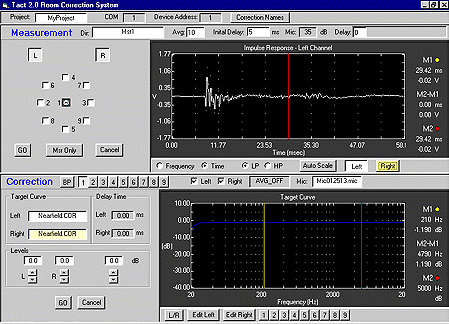
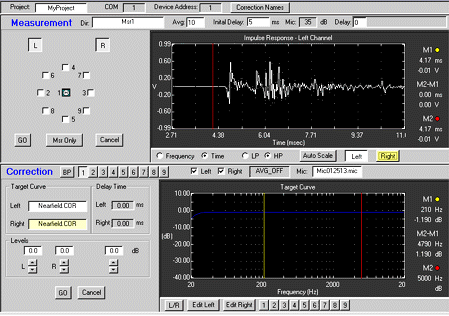
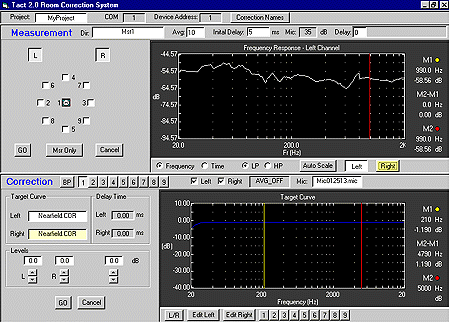
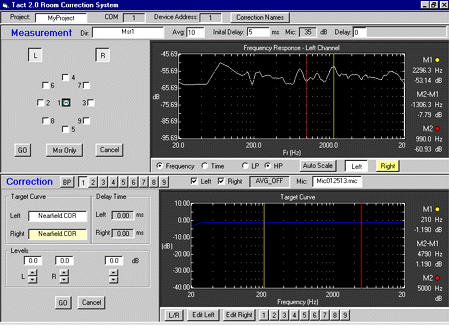
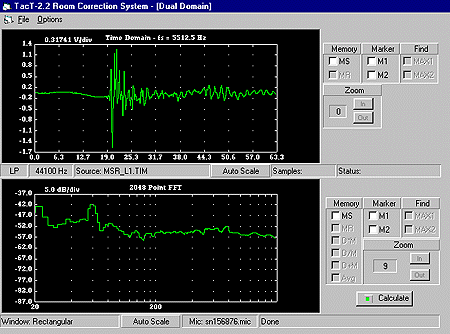
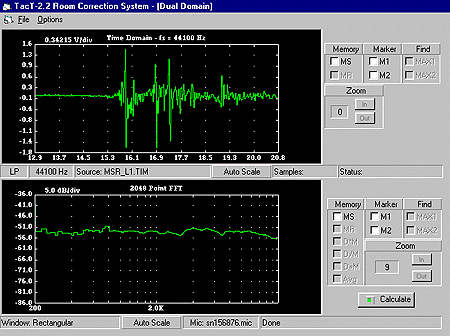



Be the first to comment on: Tact RCS 2.0 AA Room Correction System